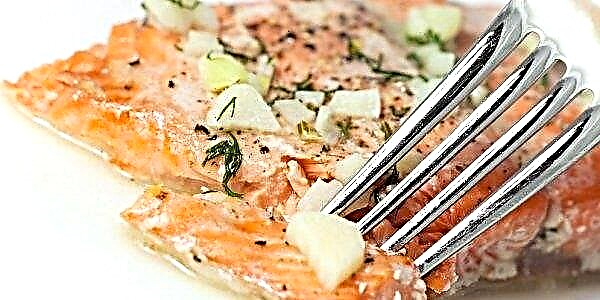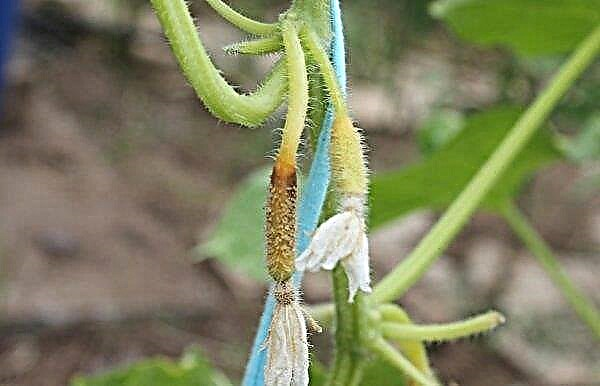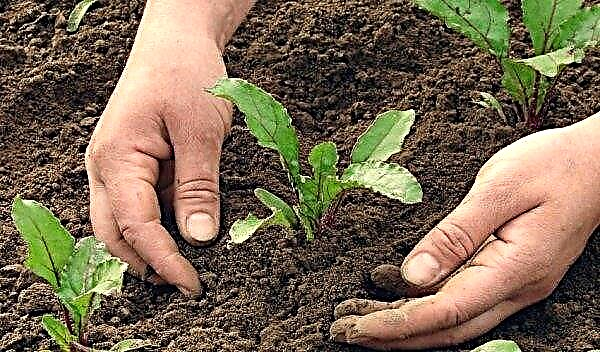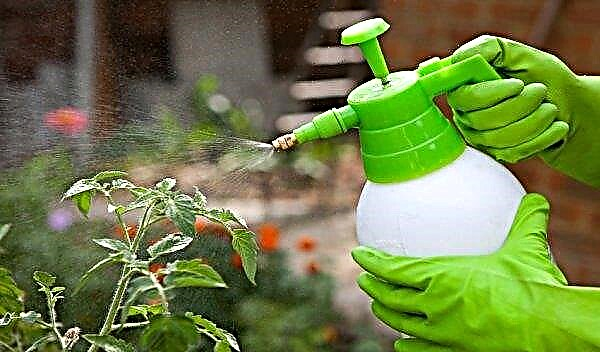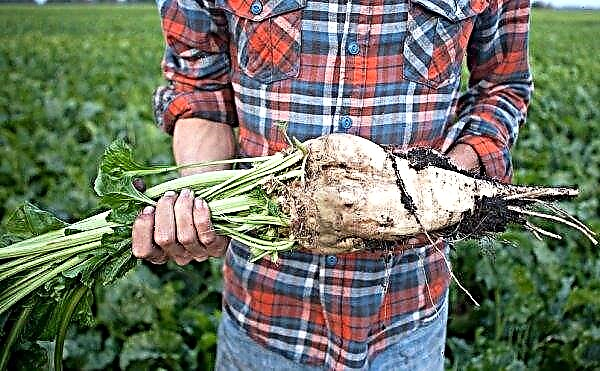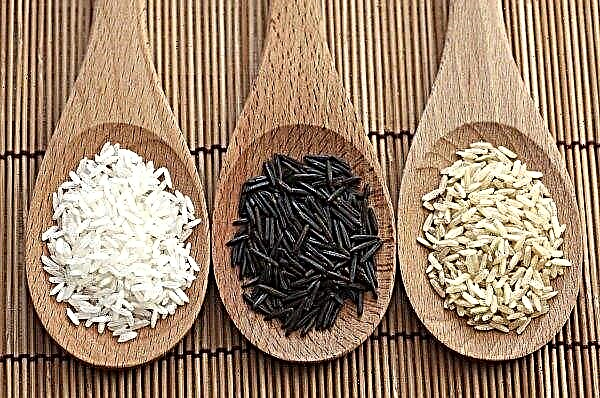Nosematosis is a sporadic, contagious disease of adult bees, which is often recorded in apiaries. The disease leads to significant economic losses, which is associated with a decrease in the productivity of bee colonies and an increase in the number of dying families, especially in the fall or during wintering. Very few bees survive in infected families. This article discusses the causes of nosematosis, prevention and methods of combating the disease.
Causes of bee nosematosis
Nosematosis is caused by two types of sporocysts: Nosema apis and Nosema ceranae, which are currently classified as fungi, but the method of their reproduction is typical for internal parasites. A new kind of disease originating from Asian bees has led to the fact that at this time we have to deal with two diseases of adult bees with different symptoms. N. ceranae is widely distributed in bee families around the world; in Europe, nosematosis in bees is caused by about 90% of it. Species of N. apis and N. ceranae have both similarities and differences. Spores of N. apis have a length of 4–6 μm, a width of 2–4 μm, a regular shape, and rounded ends. ceranae, have a length of 3.3-5.5 microns, a width of 2.3-3.0 microns, less regular shape, thinner, with narrowed ends. They also have different temperature sensitivity.
Species of N. apis and N. ceranae have both similarities and differences. Spores of N. apis have a length of 4–6 μm, a width of 2–4 μm, a regular shape, and rounded ends. ceranae, have a length of 3.3-5.5 microns, a width of 2.3-3.0 microns, less regular shape, thinner, with narrowed ends. They also have different temperature sensitivity.
- N. ceranae It is a species resistant to high and sensitive to low temperatures. After 6 hours at + 60 ° C, only 90% of the spores remain viable. After a week in the refrigerator, a significant part of them perishes, and after a week of freezing to -18 ° C - the majority.
- N. apis It is a species resistant to low temperatures and sensitive to high temperatures. After 15 minutes at + 60 ° C, all spores die, but after a week spent in freezing, most spores are capable of infection.
Did you know? In the place of a bee sting, a sting always remains. Bee venom always remains attached to a poisonous sting, the muscles of which continue to contract even outside the body of the insect. A bee stinging someone dies.
How infection occurs:
- Sources and routes of infection are the same for both types of nosematosis. Feces secreted by sick insects contain spores that infect the hive environment (food supplies, honeycombs, walls and hive bulkheads). Bees become infected with food, as they feed on contaminated food and pass it on to each other (trophallaxia).
- The spores of both species germinate and multiply in the cells of the middle intestinal epithelium. The development cycle depends on the temperature and the size of the infectious dose. Medium-term disputes occur after 4-6 days. The optimum temperature for both species is in the range +30 ... + 35 ° C. In the case of a fully developed infection, the number of spores in the gastrointestinal tract of the affected bees (in both types of nosematosis) can vary from several tens to several hundred million.
- Pathogenic effects on infected bees include alterations in the gastrointestinal tract. Decay, death and exfoliation of secretory and regenerative cells of the central intestinal epithelium occur, in which the parasite multiplies. There is a decrease or disappearance of the secretion of digestive enzymes, impaired or blocked digestion and absorption of food.
- Nosematosis disrupts the work of other structures and internal organs of the body of insects: causes changes in the composition of hemolymph, degeneration of the upper glands, degeneration and atrophy of fat deposits, increased secretion of juvenile hormone and ovarian degeneration in bees. In addition, food consumption increases, the period and amount of milk secretion through the throat glands of the working bee is reduced, the maturation of behavior (custodians, pickers) is accelerated, and life expectancy is reduced.
- Infection with N. species ceranae also causes a spatial orientation disorder and a decrease in immunity (inhibition of the production of antibacterial substances).

Symptoms of the disease
The effect of infection on the bee colony depends on the proportion of infected workers in the family. As the number of infected family members increases, the clinical symptoms of the disease may appear:
- indigestion, diarrhea (occurs with infection caused by N. apis);
- improper feeding of the bee, weak brood, insufficient production of royal jelly;
- the life expectancy of depleted bees in the form of larvae is reduced, therefore the family often weakens, its number decreases, instead of increasing in the spring;
- very strong family weakness after the first spring meal, the abdominal parts of the insects are very stretched and painted with clay-yellow stools, which have the consistency of porridge with a characteristic smell of mouse urine;
- sick bees lose the ability to fly or crawl along the walls of the hive, they fall to the ground with trembling wings;
- the family restores the honeycomb poorly;
- the presence of creeping bees in front of the hive (not always), increased insect mortality during wintering (large scree);
- a sharp reduction in the population, leading to the destruction of families (when infected with N. ceranae).
Important! Nosematosis in bees is often accompanied by diseases caused by viruses, such as black parent disease virus (BQCV), bee virus Y (BVY), filamentous virus (FV).
Infection of bees N. apis promotes the development of viral and bacterial infections by suppressing the immune system (reducing cellular and humoral immunity), and increasing the sensitivity of bees to pesticides. Nosematosis caused by N. apis usually has a chronic course, characterized by seasonal intensity during the wintering of families. ceranae, can occur rapidly, ending with the fall of families.
How is a disease diagnosed?
Tests for nosematosis are carried out by specialized laboratories to which samples of dead bees are sent. However, an experienced beekeeper can independently conduct a preliminary diagnosis of the disease. This requires dead bees collected immediately after observing the symptoms characteristic of nosematosis. It is necessary to examine the intestines of dead insects, holding the torso with one hand and pressing the abdominal cavity with the other hand until it appears. The color of the intestines is important - in a healthy bee they are brownish-yellow. If the dead bee has a milky intestine, this is a sign that the insect died from nosematosis. Further diagnosis and laboratory tests are carried out only to confirm the preliminary diagnosis.
It is necessary to examine the intestines of dead insects, holding the torso with one hand and pressing the abdominal cavity with the other hand until it appears. The color of the intestines is important - in a healthy bee they are brownish-yellow. If the dead bee has a milky intestine, this is a sign that the insect died from nosematosis. Further diagnosis and laboratory tests are carried out only to confirm the preliminary diagnosis.
Disease treatment
Beekeepers treat nosematosis using disinfection, chemicals, high and low temperatures. Experienced beekeepers have proven folk recipes to deal with this bee disease.
Disinfection
The main action in the fight against infection Nosema sp. is the cleaning and disinfection of apiary equipment and the disinfection of frames. Disinfection also includes the use of natural ultraviolet radiation - placing equipment and frames under sunlight, which leads to the death of spores. It is also recommended to store honeycombs at low temperatures (in the refrigerator, freezer).
Did you know? Bee venom has healing properties. Apitherapy, treatment with bees, includes the use of the therapeutic effect of bee venom, for example, to relieve muscle or joint pain. Experienced beekeepers claim that bee stings can even heal arthritis.
Chemicals
Chemical disinfection involves immersing the hive and its equipment in hot water with soda. You can also use a pair of disinfection with 80% acetic acid in an amount of 120-200 ml (depending on the size of cells). Honeycombs without honey and pollen are placed in an airtight cabinet or box, a container with steaming acid is placed over a stacked honeycomb. The temperature of the room in which the disinfection is carried out must be at least + 17 ° C.
Medications for the treatment of bee colonies from nosematosis:
- "Nosemacid" - made on the basis of furazolidone. The medicine has a loose powder form, yellow. The medicine is packaged in doses of 5 grams in plastic jars. Give "Nosemacid" to insects in the spring, after the first flyby. To do this, make a solution of 5 grams of the drug and 50 ml of water heated to a warm state. The resulting solution is mixed with 20 liters of sugar syrup (1: 1). Daily rate of feeding: 100 ml per frame. Give 2 days, then observe a pause for 5 days, and you can repeat the course of treatment.

- Fumagilin - the medicine is packaged in ampoules containing 0.5 grams of the drug. The contents of one ampoule are dissolved in a small amount of warm water (100 g), after which the solution is mixed with 25 liters of sugar syrup. Weakened bee families feed this composition in the evenings, at the rate of 250 ml per family. The duration of treatment is 14 days. Fumagilin quickly loses its qualities in a diluted state, so the prepared solution must be used within 5 days. Based on this, you should not dilute the medicine in advance for the entire course, this should be done in small doses.

- Enteroseptol - the industry produces this medicine in tablets, the weight of one tablet is 0.25 grams. It is impossible to dissolve medicine ahead of time, only before use. The tablet is placed in a tablespoon and, using another spoon, is ground into a powder, which is dissolved in a small amount of warm water and mixed with 250 ml of sugar syrup (1: 1). The resulting sweet solution is given to bees in the evening at the rate of 100 ml per frame. The treatment is carried out without interruption for four days, followed by an interval of 5 days, after which, if necessary, the treatment is repeated.

- "Sulfadimezin" - the medicine is used at the rate of 1 g of active substance per liter of sugar syrup (1: 1). Each bee colony is fed 0.5 l of sweet solution in the evening for three days. If necessary, the treatment of bees with Sulfadimezin continues, but only after observing a four-day pause between courses of treatment.

Herbal remedies
To improve the condition of bees, Api Herb herbal preparations (an extract from medicinal plants with the addition of vitamins B1 and B6) and Nozevit (an extract from oak bark) can be used.
Folk recipes
From nosematosis, such a folk remedy as a decoction of horse sorrel or oak bark can be very useful. It is given to bee families prophylactically for winter feeding in the form of 50 g of herbal decoction per 25 l of prepared sugar syrup. It is also used for medicinal purposes for spraying and feeding sick families in the spring: 50 g of vegetable broth per 10 l of liquid sugar syrup (1: 1), give 0.5 l every other day for one family.
Did you know? Only a working bee can sting. Males, which make up about 10% of the population of the colony, simply do not have a sting.
For autumn feeding and spring treatment, the beekeeper can also successfully give a natural antibiotic - 40 drops of garlic juice + 50 ml of alcohol. This mixture is added to 1 liter of sugar syrup (1: 1), 1/4 liter per family every 3 days for 2-3 weeks. For winter feeding, the dose is halved as a preventative.
Nosematosis treatment in spring
In the spring, the beekeeper can also give essential oils such as anise or eucalyptus as a stimulator for intensive work (combining with the fight against nosematosis): 1 g of essential oil + 50 ml of alcohol per 1 liter of sugar syrup, give 250 ml every 3 days or 1 kg of honey-sugar mixture. In addition, the sick family should be collected and warmed in a warm room, and then transferred to a clean hive. The spread of the disease usually occurs in the spring through the robbery of honey frames in weakened families, when the bees lick the feces of sweet feces.
You can also make a medicinal mixture:
- 1 gram of essential oil;
- 1/4 kg of honey;
- 1 kg of powdered sugar.
Important! To prevent the occurrence of nosematosis, it is recommended to provide 50% annual replacement of honeycombs and frames in families.
Disease prevention
Prevention of sporadic disease consists, first of all, in observing sanitary and hygienic rules in the apiary, preserving only strong families and taking care of the condition of the bees. Particularly important in the case of sporadic disease is to ensure that bee families have easy access to pollen throughout the season and adequate food reserves in the hive for the winter. When preparing bees for winter, it is necessary to adjust the size of the hive in accordance with the strength of the family and make sure that it is dry and warm. Good results in beekeeping, up to 1/3 of success, are achieved by regularly replacing bee mothers. The young, well-matured queen bee is able to provide the family with high strength, rapid development, achievement of high nectar fees and improved health.
When preparing bees for winter, it is necessary to adjust the size of the hive in accordance with the strength of the family and make sure that it is dry and warm. Good results in beekeeping, up to 1/3 of success, are achieved by regularly replacing bee mothers. The young, well-matured queen bee is able to provide the family with high strength, rapid development, achievement of high nectar fees and improved health.
After the winter season, preventive disinfection of beekeeping equipment and plasters should be carried out. For families with diarrhea symptoms, relocation and disinfection should be used. The beekeeper must prepare strong families for the winter. Strong and weak families do not unite during the season to prevent hive robbery and drones.
Even the most careful care of an apiary will not protect families from nosematosis; in our latitudes, it is constantly present in about 20% of bee families. But the beekeeper can reduce the likelihood of the occurrence of the disease and significantly reduce the losses that it causes by applying prevention and timely treatment of bee families.





